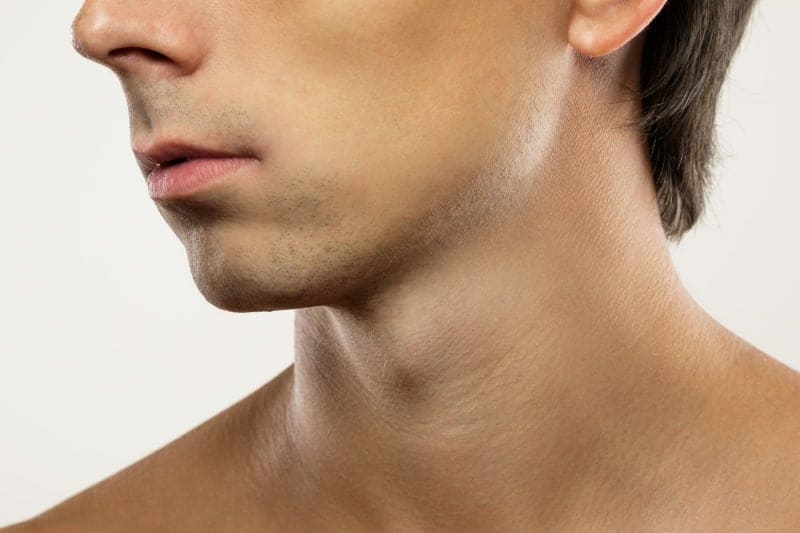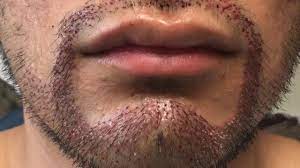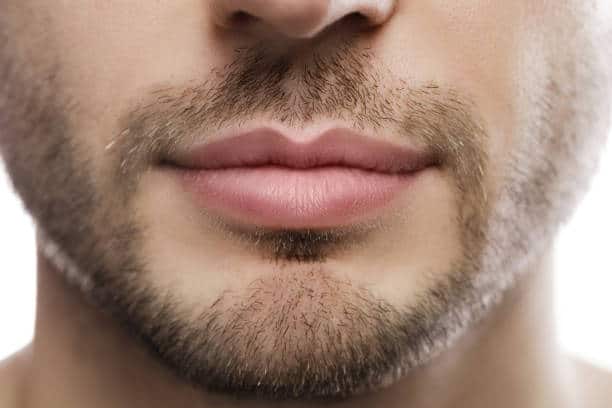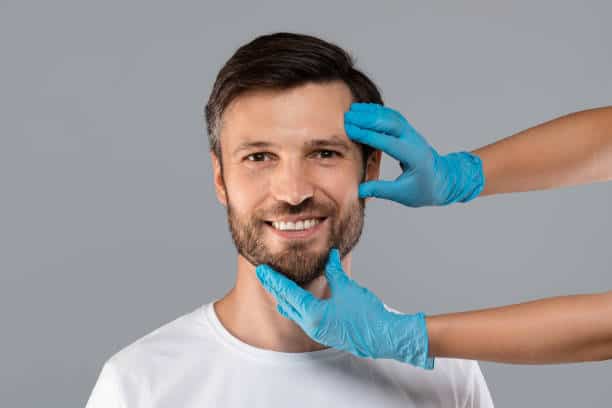Facial Hair Restoration
Facial hair like beard and mustache, as well as eyelashes and eyebrows, have a significant impact on a person’s lifestyle. Men go for a beard, & mustache, and eyebrow transplanting if any of these hairs are missing or scanty. The transplantation can usually be used if there is no facial hair at all, if it is sparse, if there is a burn in the area of face or cheeks, or if there are other medical concerns. The loss of a beard and mustache may be caused by autoimmune disorders linked to changes in hormone levels or skin conditions. Alopecia Areata is a skin illness that leads toward hair loss. No medical or cosmetic treatment can regrow or stop the loss, thus transplantation is the sole option. Filling up the empty area is the goal of FUT and HQ-Graft FUE facial hair transplantation. It works by moving healthy follicles (grafts) from the nape area to the beardless area.

The procedure for facial hair transplantation is similar to that for head. Both procedures produce comparable results by extracting the roots to be transplanted from the healthy scalp during the transplanting process. FUE process is employed in beard and mustache transplantation. The roots are taken one by one during the beard and mustache transplantation procedures performed by experts, preventing a scar on the face. New grafts are planted in the direction of the beard while beard and mustache transplantation is performed, and the natural appearance is kept.


Beard and Mustache Restoration
For beard and mustache transplantation, various conditions are required. The reason for this is that the hormones that cause facial hair growth have reached a saturation point. The age of 20 is considered the lower age limit for beard and mustache transplanting by experts. This favor is for men who wish to develop sideburns on their faces, who appreciate the look of stubble for a few days, but whose beard wires are crooked or absent. All healthy men who have no hairy patches on their beards, as well as those who have too thin or no mustaches, can benefit from beard and mustache transplanting. Aside from that, a beard and mustache can be transplanted to the scar location.

The presence of hair is the primary requirement for beard and mustache transplantation. The roots extracted from the fine-stranded area between the two ears and the follicles above the ear are the greatest quality for these treatments. The recovery time for beard and mustache transplanting is around one week. The rash and crusty appearance will fade after a week. After the surgery, there is no major pain or discomfort. In beard and mustache transplantation, the whole recuperation and adaptation phase takes between 8 and 10 weeks. With the naked eye, it is impossible to distinguish the strands, i.e. the existing beard and hair, from one another. The healing time for beard and mustache transplantation is slightly variable. After 3 months, healthy hair begins to grow, and 8 months should be allowed to pass before seeing an improvement in the entire area. Hair transplant clinic Lahore regularly displays before and after photos on website gallery and social media.
Care Instructions
The doctor will give you information on how to take care of yourself at home. Antibiotic ointment for your scalp and face may be one of them. Still you have queries, you may call to our clinic for help.
The following are some activities to avoid for at least the first few days:
Swimming, intense sunshine, and smoking are all things that should be avoided.
Soaking in a sauna or a hot tub.
Touching, rubbing, or scratching the harvested or implant sites.
Vigorous physical activity, especially anything that makes you sweat.
It’s possible that you won’t be able to wash your face for a few days or that you won’t be able to scrape it. Your skin will be sensitive and irritating, but try to ignore it to avoid inflammation and infection.
Potential side effects
The following adverse effects may also occur on your face and scalp:
Swelling
Redness
Tightness
Numbness
Crustiness or transient scabs
Scarring in the donor area is typical, although it’s usually hidden by your natural hair growth. FUE causes a lot of microscopic scars that are often unnoticed. FUT, on the other hand, creates a single lengthy scar on the back of the head. There should be no scarring around the implant locations on your face, however, there will be some temporary scabs. Tell your doctor if the crustiness, redness, swelling, or irritation persists after a few weeks.
Eyebrow Restoration
An eyebrow transplant is a cosmetic operation that involves the transplantation of grafts to the brow area. The scheme is for a new follicles to sprout from the grafts, giving the look of a head full of hair. The procedure is comparable to that of a standard hair restoration surgery. Hairs above your ears are used to make brow transplants. The follicles as well as individual fur, are relocated by the surgeon. This ensures that new hairs can grow in your brows after the ones that were transferred fall out. A surgeon will make small incisions at the follicle donor locations, as well as the transplanting sites in your brows, after administering general anesthesia. The whole procedure takes almost two to three hours.
Pros and cons
The new hairs seem natural because they are your own, according to proponents of brow hair transplants. It is also possible that the surgery will reduce the need for brow cosmetics.
It also has several disadvantages. For starters, it is expensive. It may take several months for the new follicles to take and show full benefits. Finally, there is a possibility that these new follicles will fail to create new hairs.
Precautions and side effects
One risk with eyebrow transplant is that the new follicles will not grow. In such circumstances, the procedure may need to be repeated in the future. The operation itself comes with its own set of dangers. Discuss the following potential problems with your surgeon:
A lot of blood
Damage to the nerves
Swelling
Bruising
Infection
Scarring
Your surgeon will review your medical history with you before your brow transplant. Any underlying health conditions, as well as any medications or supplements you are currently using, should be disclosed.
Eyelash Restoration
Hair moved from one place of the body (typically the back of the head) to the eyelash area during eyelash transplant surgery (upper or lower eyelid). This ensures that your lashes appear bigger and longer. While many people contemplate eyelash transplant surgery for cosmetic reasons, it may also be of interest to those who have had ocular damage (avulsions and burns) or complications from tattooing infections. Individuals with trichotillomania, a psychiatric disease characterized by picking lash hairs, as well as those with genetically short (or sparse) eyelashes, may be suitable candidates for the operation.
The operation begins with the measurement and cuts of the hair on the back of your head. During the surgery, the scalp hair will be used to generate new eyelashes. Your eyelash area is ready and anesthetized once plenty of hair has been removed from the scalp. To relieve pain in the scalp and eyelash areas, a local anesthetic is utilized. Then the new eyelash hair sets one by one. It takes 2 and 4 hours to complete the whole process.
Pros and Cons
It provides long-lasting results not seen in other eyelash remedies.
It uses actual hairs rather than synthetic ones to create lashes.
However, like with any type of surgery, there are some dangers to consider. These are some of them:
Pain
Bleeding
Infection
Unappealing appearance
Irritates the cornea
How to get an appointment and fee for check up?
There is no checkup fee so you may get consultation Free. You may also send your close up photos through WhatsApp +92-333-430-9999

